Next stop Modena or Mantua? Mantua won the toss, and a good choice it turned out to be,although I know I have missed much of interest in Modena.
I took the direct local road from Ferrara, by crossing to the north bank of the Po, then turning west and driving with the Po to my left for 50km.This area is absolutely and completely flat, the highest point, rather disconcertingly, being the river Po itself, which is contained with massive earth embankments, the tops of which are higher than all the surrounding houses and farm buildings.
The old city of Mantua is surrounded on 3 sides by an artificial lake, created as a defence, and crossed by two causeways. I dropped the van off at the municipal camper spot, which is on the shore of the lake facing the city. It is fully automated,15 Euro for 24 hours. You take a ticket at the barrier and pay at a machine before exit , like a car park. The price includes electricity, and the toilet and shower block ,which is centrally heated and very clean, is accessed by using your parking ticket in a scanner at the door.
I took the direct local road from Ferrara, by crossing to the north bank of the Po, then turning west and driving with the Po to my left for 50km.This area is absolutely and completely flat, the highest point, rather disconcertingly, being the river Po itself, which is contained with massive earth embankments, the tops of which are higher than all the surrounding houses and farm buildings.
The old city of Mantua is surrounded on 3 sides by an artificial lake, created as a defence, and crossed by two causeways. I dropped the van off at the municipal camper spot, which is on the shore of the lake facing the city. It is fully automated,15 Euro for 24 hours. You take a ticket at the barrier and pay at a machine before exit , like a car park. The price includes electricity, and the toilet and shower block ,which is centrally heated and very clean, is accessed by using your parking ticket in a scanner at the door.
The lake has constrained the growth of the city so it remains a pleasantly small place that you can walk across. Approaching across the causeway is an attractive walk, as you come nearer to the cluster of domes and towers. There is a lot to see: the city was the territory of the Gonzaga family for several centuries
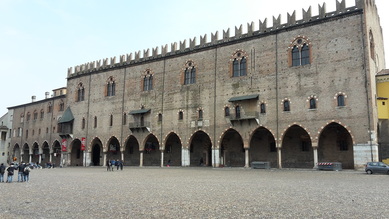 The Ducal Palace
The Ducal Palace I visited the Ducal palace, on Piazza Sordello, which is a massive complex, on numerous quadrangles ,added to between the 14th and 17th centuries by generations of rulers and apparently the biggest residence in Italy after the Vatican There are some 500 rooms, although just 35 are open to the public. The rooms vary in their decoration, but many of the walls with renaissance frescos were re- decorated over the years and some rooms are now in the style of the Napoleonic era or the subsequent period of Austrian occupation.
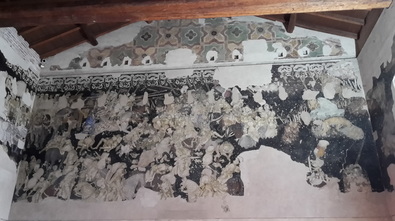 The remains of Pisanello's fresco "The tournament"
The remains of Pisanello's fresco "The tournament" The famous wedding room with 15th century frescos by Mantegna was unfortunately closed for restoration. In some of the rooms the more recent layers have been painstakingly removed, and the result of this was the revealing of one of Pisanello’s original frescos from 1433,”The Tournament”. Adjacent to the palace is an additional and massive brick-built castle , in the same style as the one in Ferrara ,but that was closed for renovations too.
Having safely deposited the van, and having arrived at my destination a little earlier today, I was able to enjoy a good lunch. I tried some Mantua specialities, firstly Tortellini di Zucca , pasta filled with sweet pumpkin and amaretti paste, served in butter with a bit of sage. The next course was Stracotto, tender meat stew cooked for 8 hours, and served with polenta. Traditionally this was made with donkey meat, but the menu said mine was beef (I think!).Later I picked up a further local speciality, giant Mantua biscuits called Torta Sbrisolona from a cake shop. They are very thick crumbly cookies filled with nuts, some of them as big as a dinner plate, and have the texture of a sweet crumble topping.
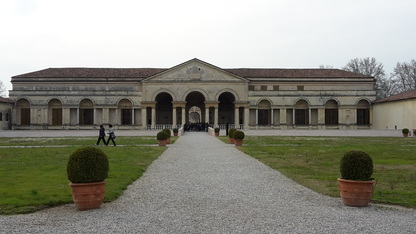
To walk this meal off I set off across town to visit the Palazzo Te. This was built by the Duke Frederico II Gonzaga between 1525 -1535 as a secondary residence and pleasure palace. In an early version of work-life balance he set it up formally for periods of official relaxation once the affairs of state were complete. It is situated on what used to be the island of Te just 2 km from his main palace. Because this was built and decorated over a short period as a single entity its frescos in all the rooms are all original and intact, and are stunning. Some of the rooms are decorated with bacchanalian scenes, no doubt to stimulate the Duke’s relaxations.
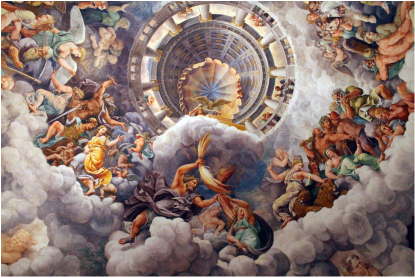 The gods on Mt Olympus, the ceiling of the Room of Giants
The gods on Mt Olympus, the ceiling of the Room of Giants One of the amazing rooms was the “Room of Giants” decorated in floor to ceiling with a 360 degree trompe d’oeil view of the world crashing in on the giants who used to rule it, as the Gods on Mount Olympus (on the ceiling) take revenge for the giants’ plot to overthrow them (from Ovid’s Metamorphosis).I suddenly realised on seeing it that I had seen it before on Francesco Da Mosto’s Italy Top to Toe series.
As well as this, the Palace was hosting an exhibition by the Chinese dissident artist Ai WeiWei, and two other contemporary Chinese artists.
The architectural style of the Palazzo looked way ahead of its time to my English eye, as such neoclassical styles didn’t take off in English architecture till 2 centuries later.
Overall, Mantua is a very attractive place , with lots to see, and absolutely no souvenir shops or tourist tat to be seen.
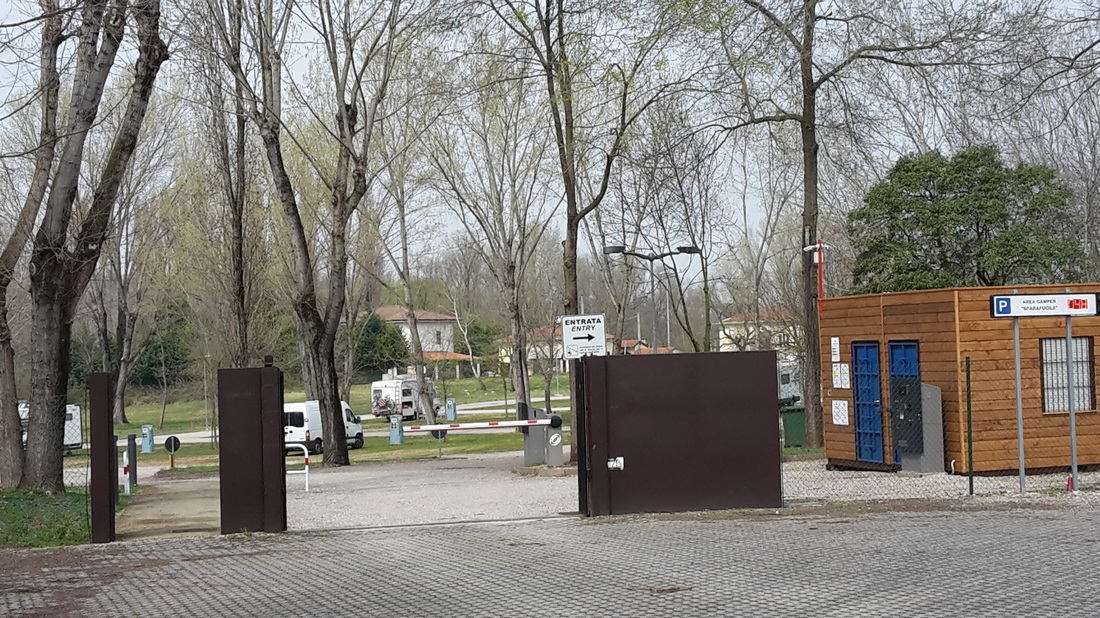
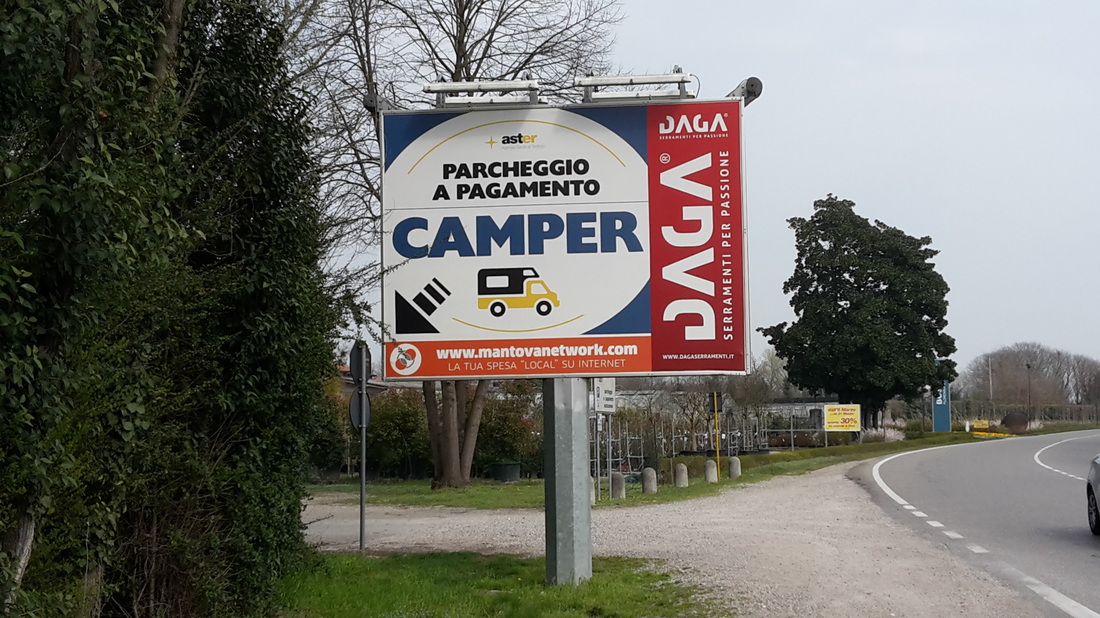
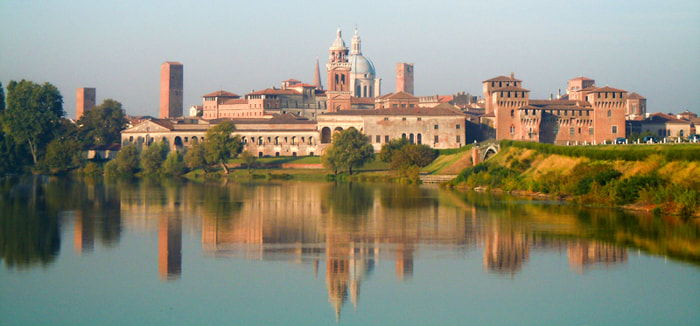
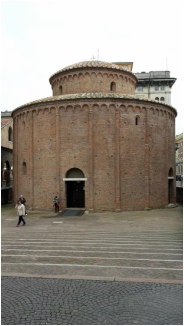
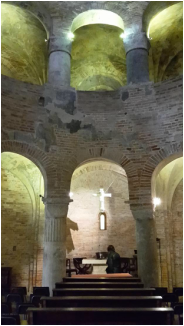
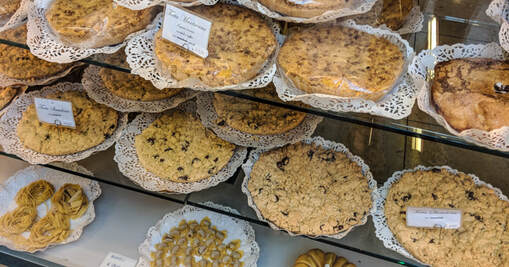
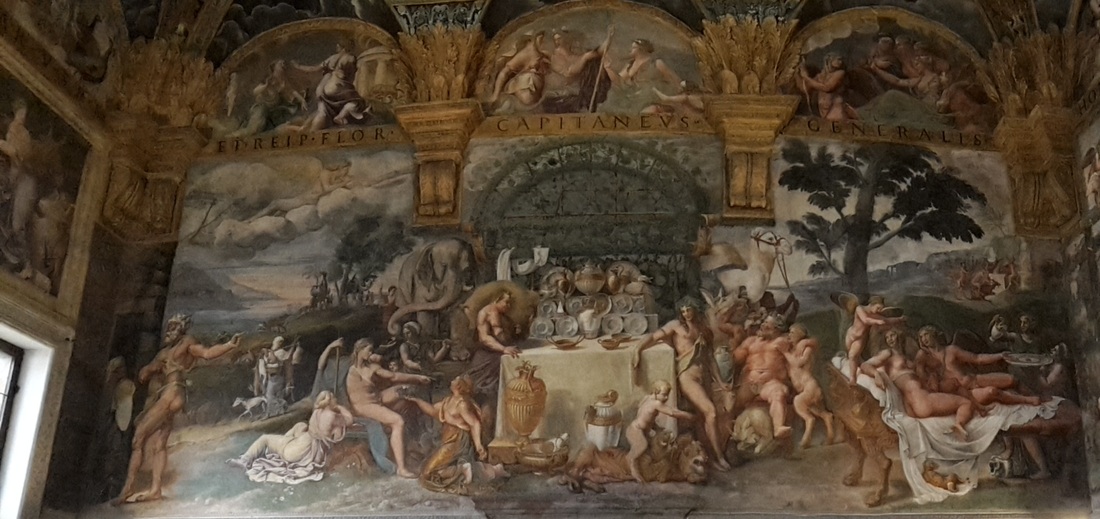
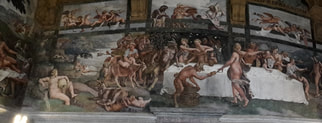
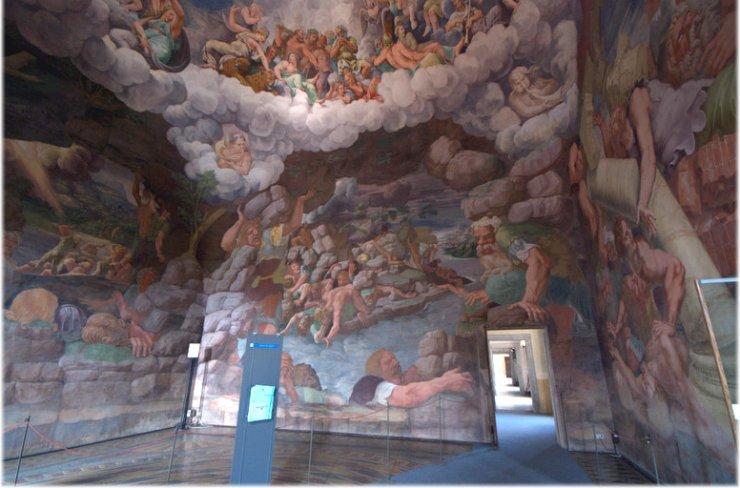
 RSS Feed
RSS Feed